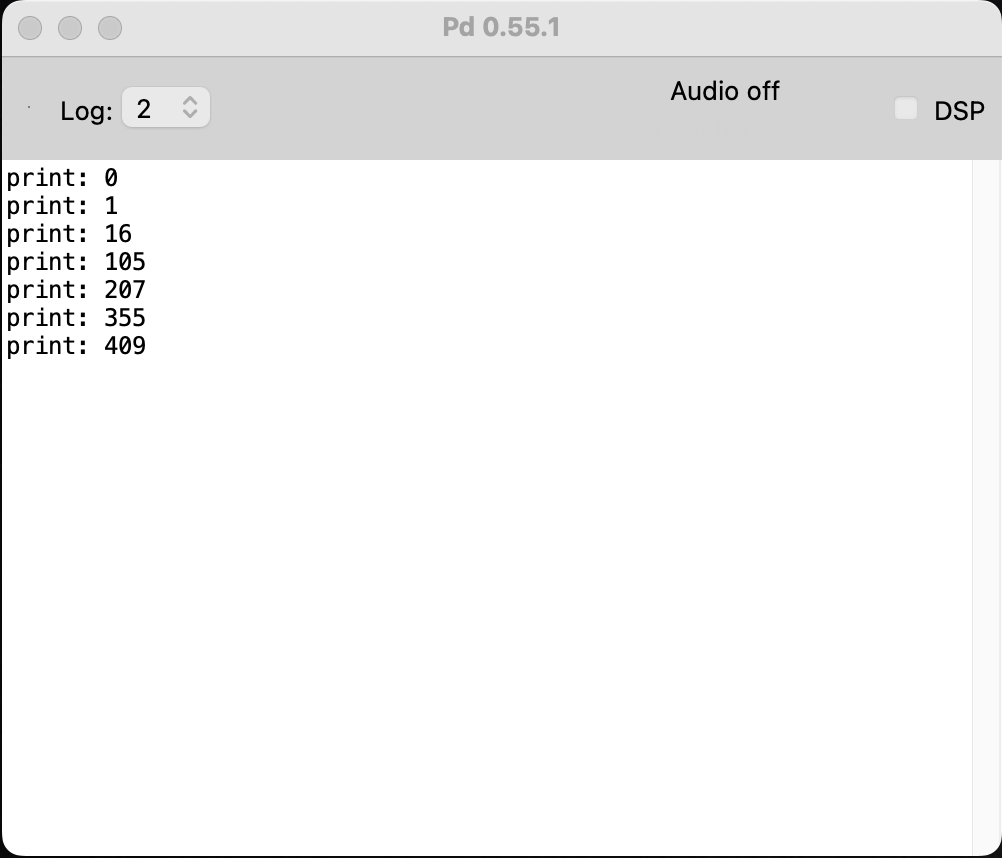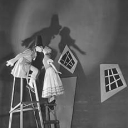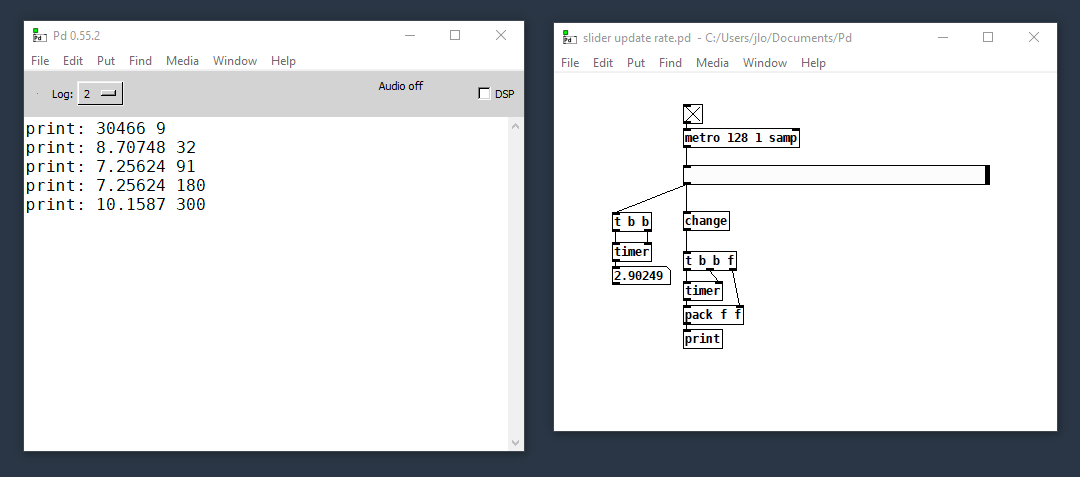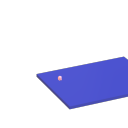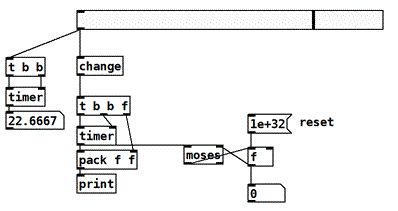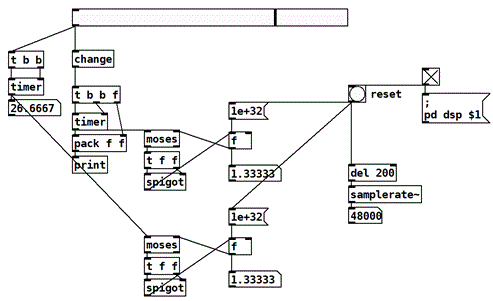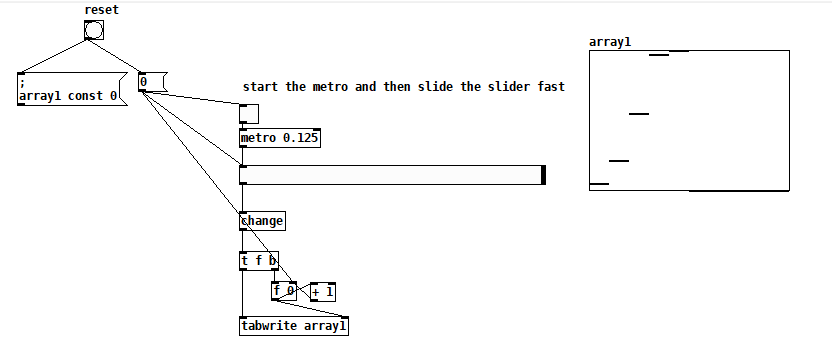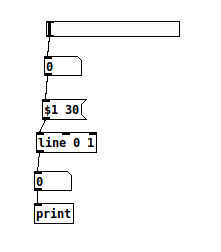@jameslo My test........ as I remember [timer] reporting "The timer object measures elapsed logical time. Logical time moves forward as if all computation were instantaneous and as if all "delay" and "metro" objects were exact."
try.zip
All values are sent by the slider banged at a 1msec rate, and are fast in 0.55.2
Keep the slider sub-patch open or [metro] cannot be stopped.
Much earlier versions of Pd were not so fast, with some values repeated or not sent.
Pd better? Wish86 better than Wish85?.
It looks as though a [metro] fine tuned to the actual reported time could maybe achieve a stable [realtime] value... I will try when I get a moment..
It gives 3 values per 3msecs with jitter.
DSP off.

With DSP on the timings are very stable though and suggest 10 sub-divisions per block.... but none of the maths I have tried so far correlates to samplerate and/or screen refresh.
10 values per 10msecs, so not per block either.
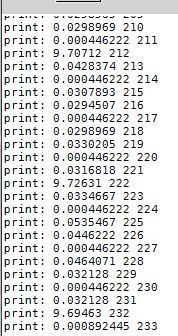
Some thoughts I wrote before actually testing.... which seemed correct at the time of writing but are not confirmed by the control rate test..... so a large pinch of salt required....
"As said above, the intermediate values cannot be recovered, but can be approximated by an audio rate object.
As @jameslo says [lop~] will not arrive at the final value, and introduces a delay (phase shift).... https://forum.pdpatchrepo.info/topic/11850/explanation-for-lop-object-in-this-patch-requested
[line~] and [vline~] will approximate in "realtime" at the samplerate. [vline~] better than [line~] as it works across boundaries and so values between ticks can be obtained.
And anyway, the audio samplerate is 64 values every 1.45msecs.
The control rate samplerate is 1 value every 1.45msecs.
If you drag your number box fast enough then you will exceed even the audio rate possibilities for capture, in much the same way as the values generated by your [osc~] at a high enough frequency.
It is only once back in the analog domain via [dac~] that you can have a smooth waveform.
David.
